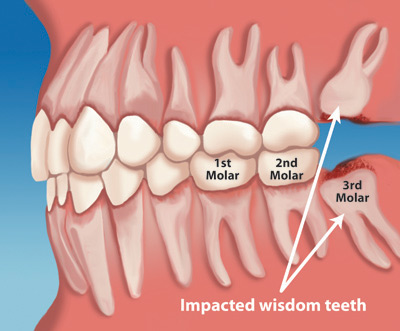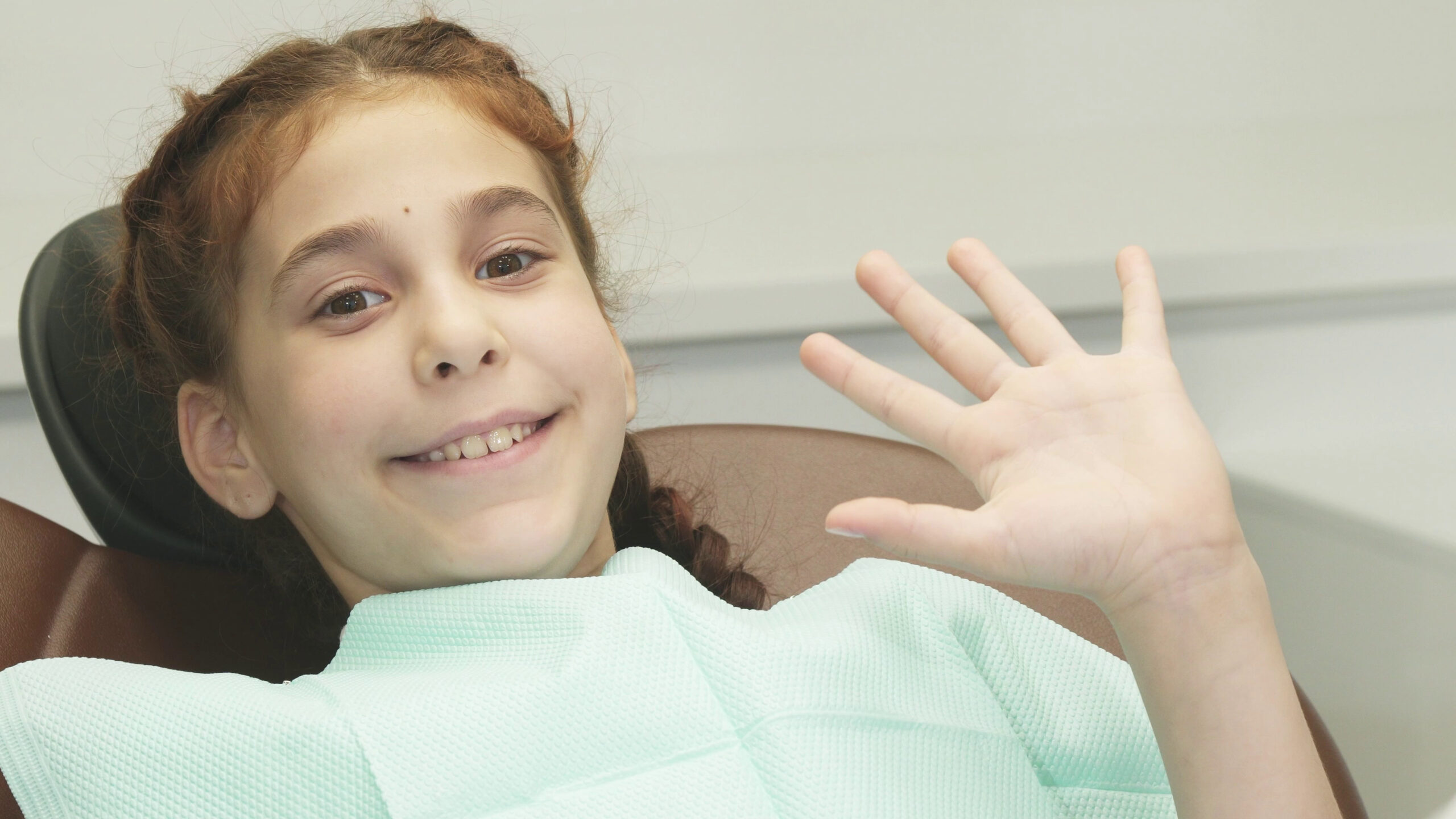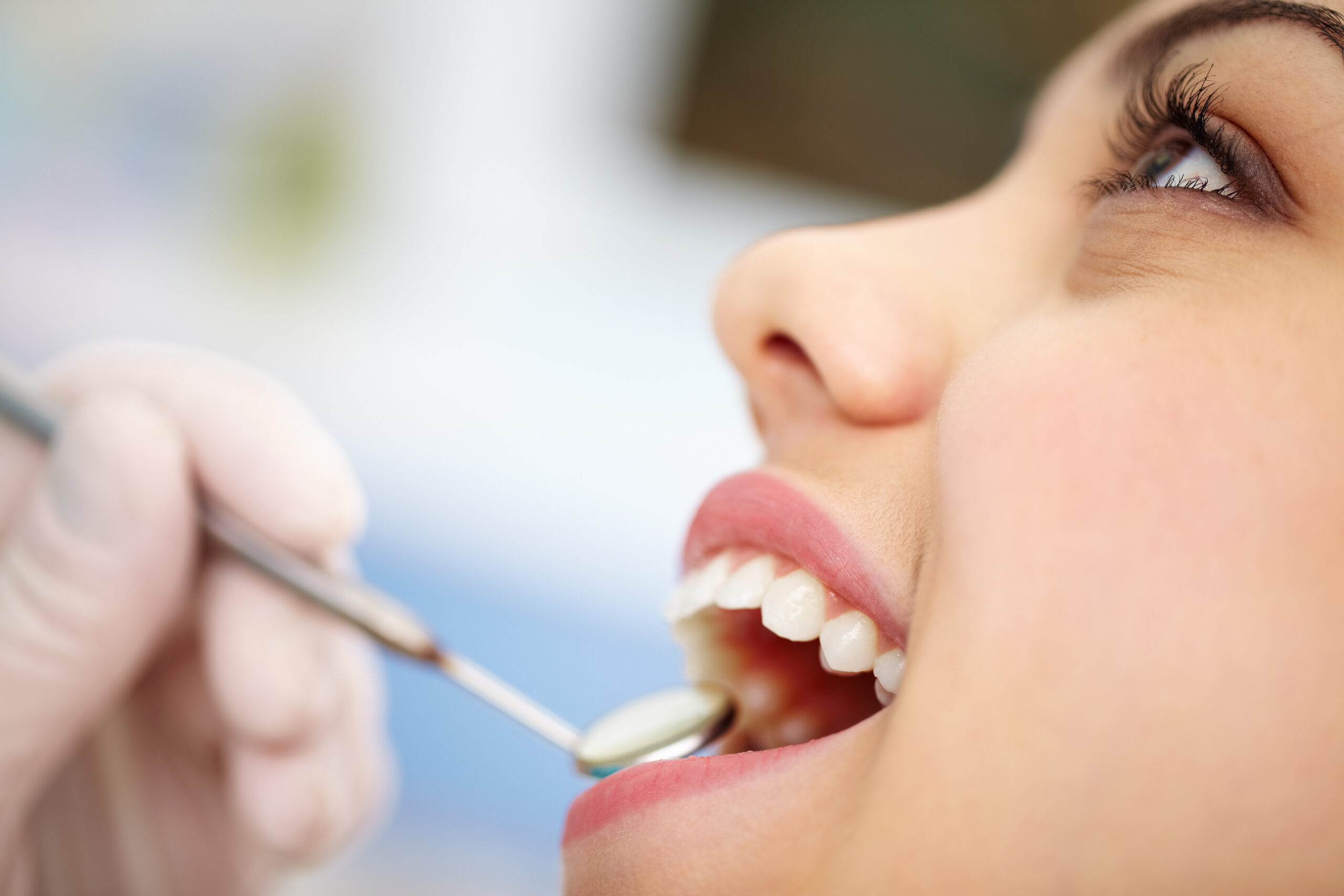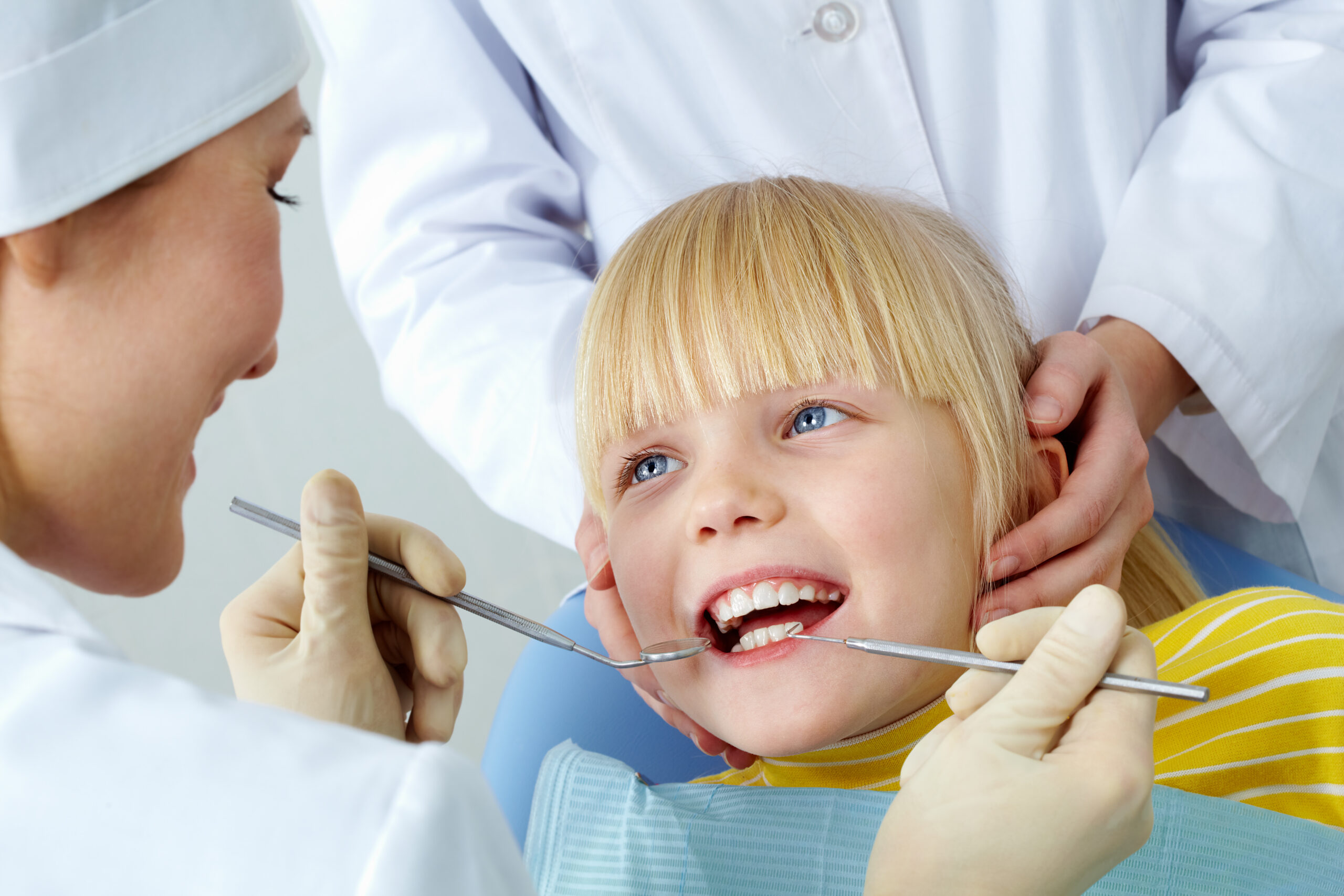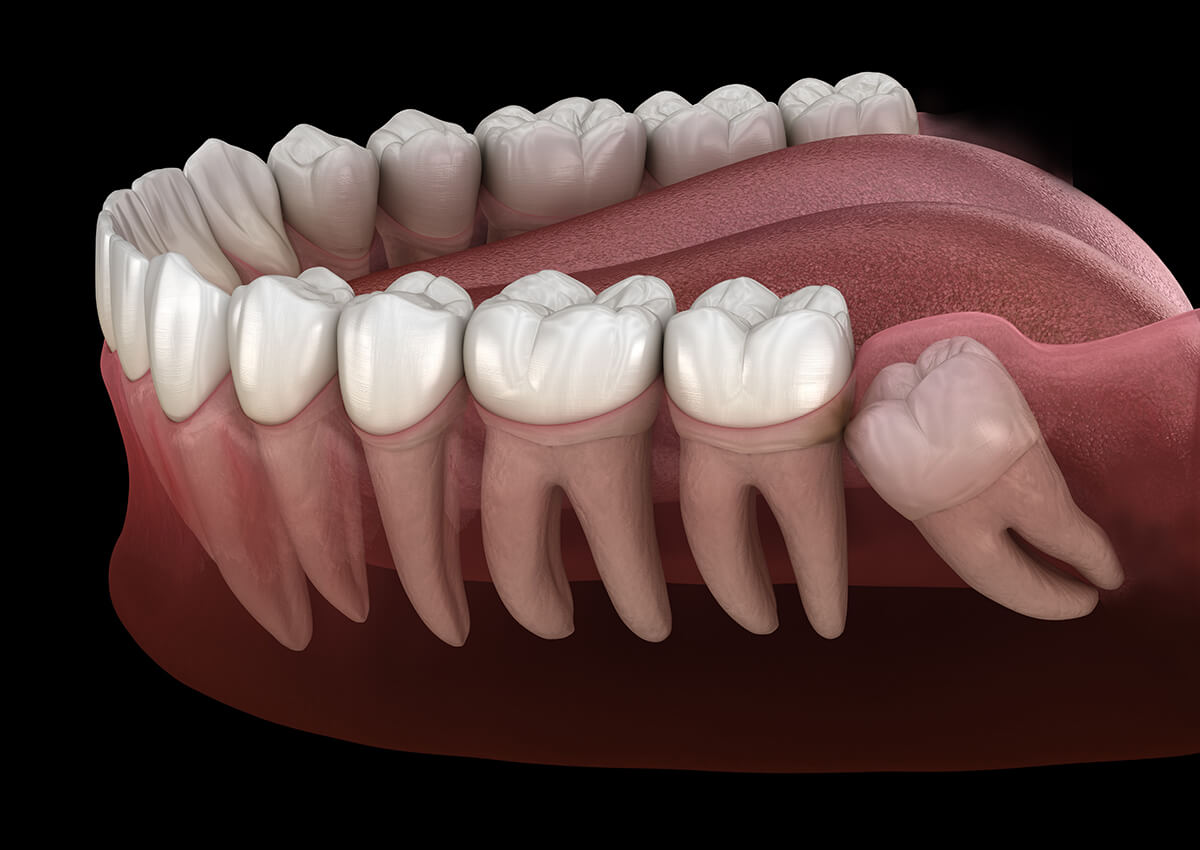
Pediatric Wisdom Teeth Removal Guide
March 11, 2020 ABC Children's Dentistry
Wisdom teeth removal is fairly common. In fact, Americans have as many as 10 million wisdom teeth removed every year. However, many of us don’t know much about wisdom teeth or the removal procedure.
What are wisdom teeth? Why do we even have wisdom teeth? How do you know if your child’s wisdom teeth need to be extracted? How much does it cost? What about recovery?
These are all questions you might have after talking with your dentist about extracting your child’s wisdom teeth. This article will tell you everything you need to know about pediatric wisdom teeth removal and what to expect from the procedure and subsequent recovery. Keep reading to learn more.
What Are Wisdom Teeth?
These teeth are also known as third molars and typically erupt between the ages of 17 and 21. Often, an initial evaluation is performed by your child’s dentist by age 16. Wisdom teeth are commonly removed because most mouths are too small to fit four extra teeth.
So, if there isn’t enough space for them in most mouths, why do we have them? Most scientists believe they were necessary for our ancestors, even if we don’t really use them today. They were useful when the human diet consisted mostly of raw meat, leaves, roots, and nuts. These days most of us cook our food rather than eating it raw and use cutlery to cut, crush, and smash our food rather than relying on our teeth. As a result, we don’t really need wisdom teeth anymore.
How Do You Know If Your Child’s Wisdom Teeth Need to Be Removed?
The American Dental Association (ADA) recommends that people between 16 and 19 have their wisdom teeth evaluated by their dentist to see if removal is necessary. There is no perfect age for wisdom teeth removal, so when should you have it done? If your child’s wisdom teeth are in, should they be removed right away or should you wait to see if problems develop? Unfortunately, the decision isn’t simple. Here are factors to consider if your child’s wisdom teeth are already in:
- Are they impacted? Impacted teeth can grow sideways or crooked and lead to bigger problems.
- Is there crowding? Crowding happens when teeth are too close together and push against other teeth. This can cause pain and lead to an infection caused by bacteria growing between crowded teeth.
- Are they causing pain? If your child’s teeth cause pain or discomfort, it might be time to consider removal.
What You Need to Know About Impacted Wisdom Teeth:
When a wisdom tooth forms but does not erupt, it is impacted. Wisdom teeth that only partially emerge are known as partially impacted wisdom teeth. In the case of impaction, the tooth is likely to grow at an angle due to a lack of space. There are many issues that can arise due to impaction. Your dentist will likely recommend wisdom tooth removal if teeth are impacted to avoid the following outcomes:
- Tooth pain at the site
- Trapped food that can cause decay
- Damage to nearby teeth and gums
- Damage to the jawbone
- Irritated gums
- Bacterial growth in the gumline of partially impacted teeth
- Development of a cyst or tumor near the tooth
- Infection
- Shifting teeth
- Jaw and gum disease
If an impacted wisdom tooth causes pain or tooth damage, your child’s dentist will recommend removal. It is important to schedule regular dental exams; only the dentist will know for certain if a wisdom tooth removal procedure is necessary for your child.
Are There Any Cons to Wisdom Teeth Removal?
Wisdom teeth do have some advantages. They can provide the support needed for a dental bridge. Wisdom teeth can also fill in gaps left after the loss of another molar. In fact, some scientists believe that wisdom teeth could be used in the future as a source for stem cells which could be used to develop new teeth.
These days, dentists often use new dental technology during your child’s dental exam to determine if extraction is necessary. Panoramic and digital X-rays help dentists see things that might be missed with a simple visual exam. Using X-ray technology can also help your child’s dentist identify any additional risks from individual anatomical features. This tech also helps the dentist determine the best approach for the removal procedure for your child.
What to Expect From the Procedure:
Usually, a wisdom teeth removal procedure is performed under local anesthesia. If your child is particularly anxious about the procedure, consult with your dentist or oral surgeon before the procedure about anesthesia supplements or alternatives that might help.
Knowing what to expect from a dental procedure can help your child feel less anxious about their wisdom teeth removal. So, what can you expect? What exactly is the procedure?
Wisdom tooth extraction is a dental surgery procedure that involves cutting through the gum tissue covering the tooth, removing the connective tissue between the wisdom tooth and the bone, removing the wisdom tooth, and sewing the gum closed again. Occasionally, the bone around an impacted tooth must be removed in order to perform the extraction. In some instances, the wisdom tooth may need to be cut into sections to be removed.
Your child should not experience any pain during the surgery, because they will be under local or general anesthesia. However, after surgery, many people do experience pain. The amount of discomfort depends on whether you give your child pain medication and the child’s tolerance for discomfort. Generally, most children experience some level of discomfort for three days after the procedure.
Tips for Recovery After Teeth Removal:
Most children recover fully from wisdom tooth removal five to seven days after the procedure. The gum area may take longer to fully recover and any jaw damage that may have occurred can take up to six months to fully heal.
How can you help your child heal after wisdom tooth removal?
- In the first 24 hours after removal, expect bleeding. To control bleeding, place gauze over the site. Biting down on the gauze for 45 minutes should end any bleeding.
- Don’t have gauze? A tea bag works well too. Plus, the tannic acid found in tea can help form clots and prevent a condition known as “dry socket.” If the bleeding is heavy and does not stop, call your dentist.
- You should expect to see some facial swelling after the procedure. To help relieve swelling, apply ice to the swollen area for 10 minutes and remove for 20 minutes. Repeat this procedure as often as needed during the first 24 hours.
- If your child’s dentist uses stitches during the procedure, they may need to be removed. Talk with your dentist about whether you need to return for removal. In many cases, dentists use self-dissolving stitches that do not require removal.
- Since your child will most likely experience pain and discomfort for at least a few days, consider over-the-counter medications like acetaminophen or ibuprofen. In some cases, your oral surgeon may prescribe a stronger pain reliever.
- If any infection was found prior to removal, your dentist may recommend taking antibiotics before and after the procedure to prevent another infection.
- Do not allow your child to rinse their mouth for 24 hours after extraction. After that, gently rinse with salt water after meals and at bedtime. Continue saltwater rinses for five days after wisdom teeth removal.
- Feed your child a liquid diet for a few days after the extraction. Pudding, applesauce, and mashed potatoes are good choices. Work up to easy-to-chew foods (e.g. pasta) gradually.
- Instruct your child to use teeth far away from the extraction site to chew when they return to solid foods.
- Have your child brush and floss remaining teeth normally, avoiding teeth and gums near the extraction site.
Most dentists recommend removal sooner rather than later to avoid problems associated with impacted or crowded teeth. However, only your child’s dentist can decide, so it’s important to maintain regular dental exams and assessments.
If the dentist recommends extraction, it’s important to know what to expect from the surgery and recovery. It is our sincere hope that this article has helped you understand more about wisdom teeth and their removal. Additionally, it’s a good idea to discuss any questions or concerns you still have about removal with your child’s dentist or oral surgeon.
Wisdom Teeth Removal FAQ:
Is Wisdom Teeth Removal Painful?
You shouldn’t feel any pain during the removal because the area will be numb. If you do have any discomfort, tell your dentist or oral surgeon so they can adjust your anesthesia.
Do They Break the Jaw to Remove Wisdom Teeth?
A common misconception is that it may be necessary to “break the jaw” to remove difficult wisdom teeth. However, this is never the case.
Can You Remove Your Own Wisdom Tooth?
Removal of Wisdom teeth should always be performed by a dentist or oral surgeon. If your dentist recommends removing your wisdom teeth, they’ll take an X-ray of your mouth to help determine whether you need an oral surgeon for your procedure.
Does Removing Wisdom Teeth Change Face Shape?
In terms of facial appearance, some people find that the removal makes their jaw appear more narrow.
What Happens If You Wait Too Long to Get Wisdom Teeth Out?
Most extractions don’t require immediate action. However, waiting too long can lead to infection, orthodontic problems, or even an abscess.
Is It Safe to Remove All Four Wisdom Teeth at Once?
Yes, all four teeth are commonly removed at the same time in a procedure that lasts an hour or less.
Does Removing Wisdom Teeth Change Your Child’s Smile?
The removal of wisdom teeth can affect the alignment of your child’s smile.
Should Wisdom Teeth Be Removed If They Don’t Hurt?
Your dentist may recommend that you have your wisdom teeth removed if they cause pain, infection, crowding, or become impacted. If your wisdom teeth are healthy and don’t cause trouble, they may not need to be removed.
How Much Does It Cost?
Cost varies, but a simple removal costs $75-$200 per tooth. Impacted teeth cost between $225 and $600. On the bright side, insurance usually covers the removal.
What Are the Early Signs of “Dry Socket?”
Signs and symptoms associated with “dry socket” include severe pain days after the procedure, loss of the blood clot covering the extraction site, and/or visible bone.
How Do You Fix “Dry Socket?”
Flush out the socket to remove food debris and prevent bacteria growth. Then, apply medicated dressings to the area and use pain medication as needed.
How Long Does “Dry Socket” Last?
Dry socket commonly lasts about seven days.
What Is the Youngest Age You Can Get Your Wisdom Teeth Removed?
The most common ages to have the procedure are between 16 and 20, but it can be performed as early as 12.
Do Wisdom Teeth Holes Smell?
If your child has a “dry socket,” the empty tooth socket may have an unpleasant smell.
How Do You Get Rid of Wisdom Teeth Holes?
The resulting blood clot needs to remain in the socket, so don’t try to clean it out. Instead, gently rinse with warm salt water after the initial 24 hours post-surgery has passed.

